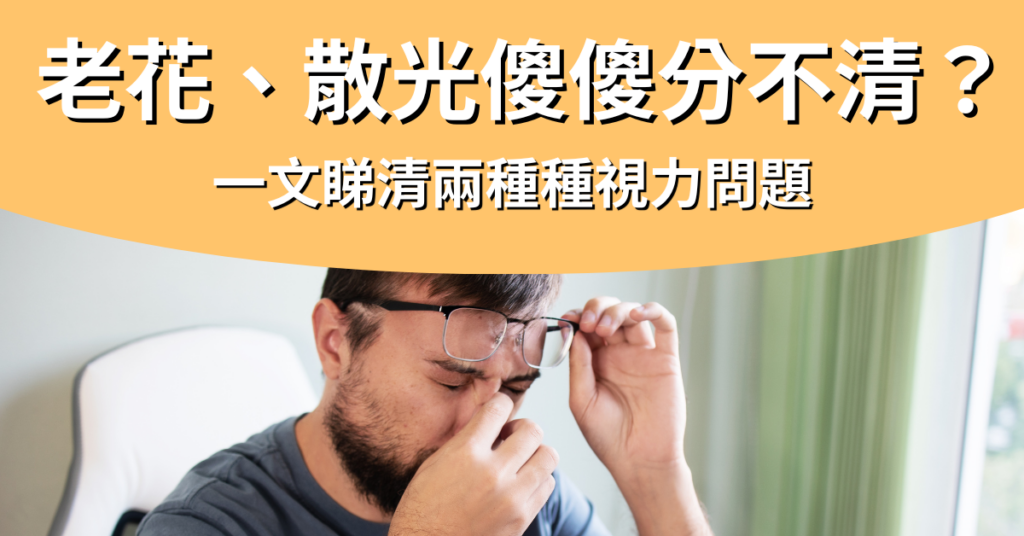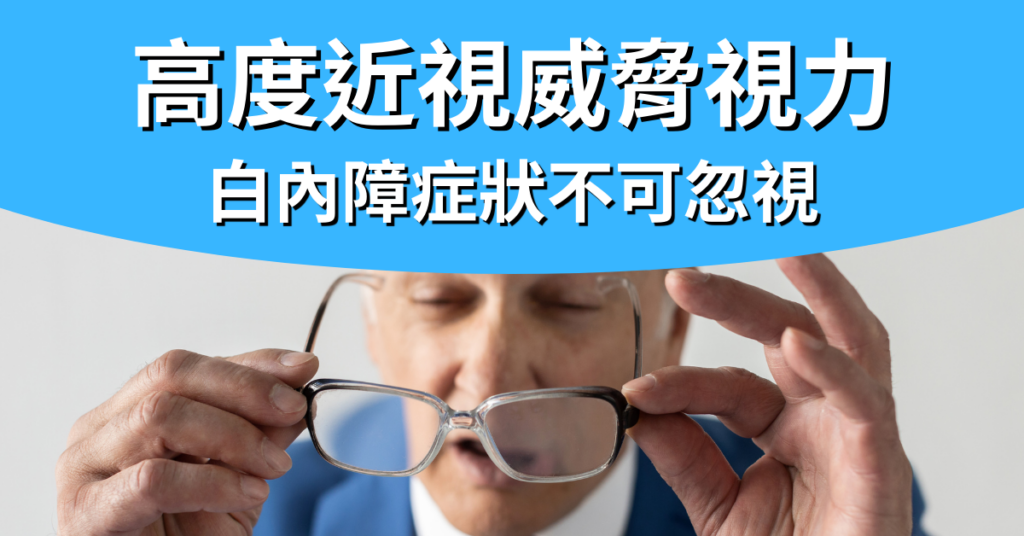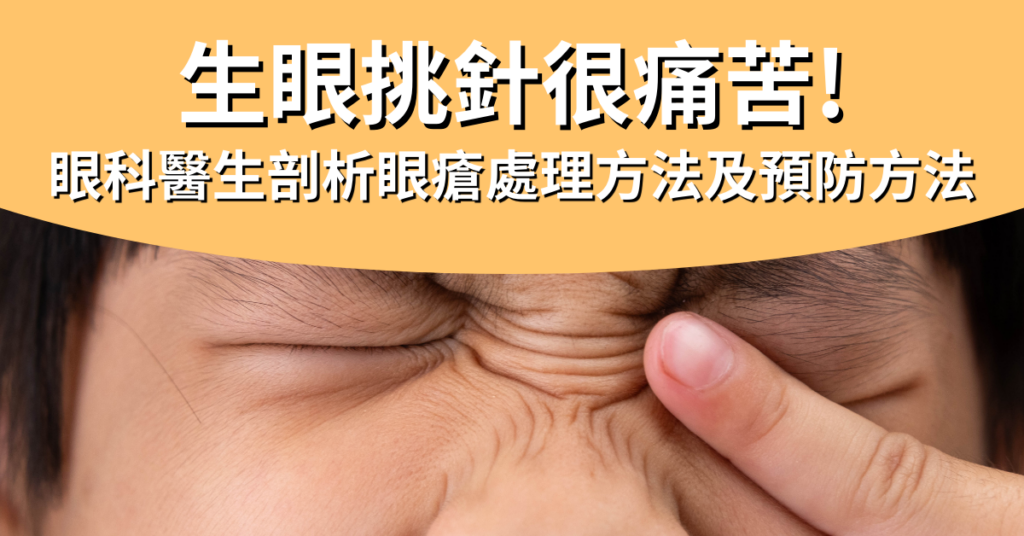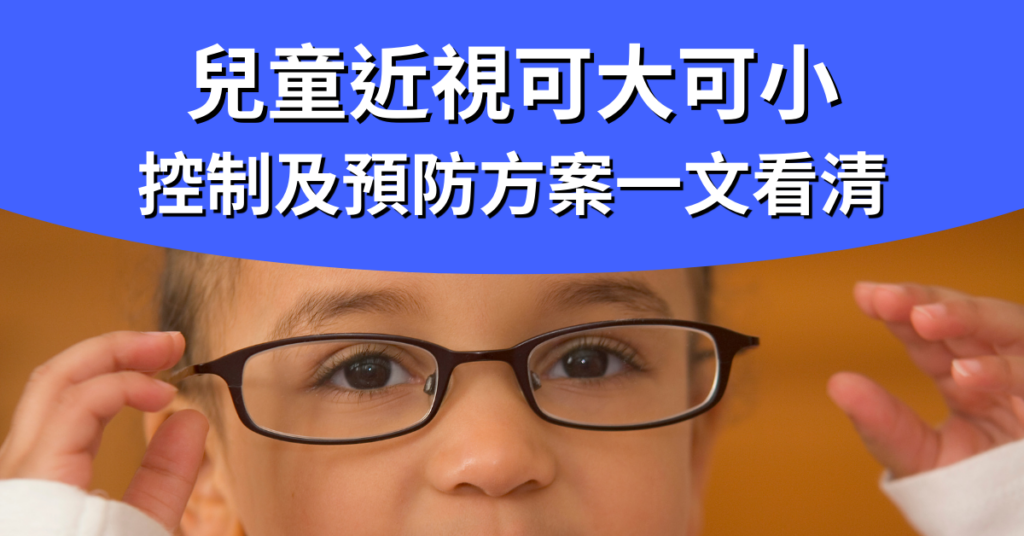Myopia is one of the most common eye problems among children nowadays. According to the Department of Health, about 18% of children aged 6 in Hong Kong have myopia. The rate of myopia in 12-year-olds is as high as 62%, which is much higher than that in other Eurasia regions. In addition to bad eye habits, if parents themselves have high myopia, the chance of children suffering from myopia will also increase significantly. Therefore, early prevention and control of myopia in children is extremely important.
Electronic products are the leading cause of myopia in children
With the popularization of electronic products, the age group of myopic children has gradually increased. Many parents use electronic products as children's pacifiers, and children develop the habit of relying on electronic products when their eyes are not fully developed, affecting the normal development of their eyes.
Among children with myopia, up to 80% of children myopia is caused by poor eye habits. Watching the electronic screen for a long time will make the pupil constantly adapt to the change of light source, so that the ciliary muscle that regulates the pupil is always in a state of tension, resulting in excessive eye fatigue and enhancing the risk of myopia in children. To prevent or control myopia in children, parents must strictly control the amount of time their children spend using electronic devices, encourage them to participate in outdoor activities, and reduce their reliance on electronic nipples.
Is myopia in children also true and false?
But in fact, myopia also has "true myopia" and "pseudomyopia", the former is because the eye structure has changed, so it cannot recover naturally; The latter is a manifestation of temporary eye fatigue, which can be improved as long as the eye muscles are properly relaxed. Since the two types of myopia recover in different ways, the focus should be on understanding which type of myopia children belong to.
Pseudomyopia often occurs in children under the age of 12, because the ciliary muscles of children are quite powerful, and they use electronic products for a long time in close proximity, which is prone to the inability of the ciliary muscles to relax naturally, resulting in pseudomyopia. However, as long as the eyes are sufficiently rested, children with pseudomyopia can return to normal vision.
If you suspect that the child at home has vision problems, it is recommended to seek an ophthalmologist for examination immediately, usually pseudomyopia in children can be restored, most of them are ordered to relax the eyes, so as to detect the true refractive state of the eyes, to judge true/false myopia.
Although pseudomyopia in children can recover, it is also a major sign of myopia, and if children do not correct their eye habits in time, they may also become true myopia.
How to find out if a child has myopia?
Children will not realize that they have vision problems, so parents should pay extra attention to whether children have myopia or other vision problems through observation. If the following signs of myopia occur, parents should take their child to consult an ophthalmologist:
- Blink or rub your eyes frequently
- Often pull the corners of your eyes or squint to see things in the distance
- Often tilt your head to see things
- When looking at things, the eyes are close to things
What are the consequences of neglecting to control myopia in children?
Some parents may think that if their children's myopia is not deep, they can ignore it. However, in fact, if children's myopia is not controlled, the degree of myopia will gradually increase with age, and even soar in a short period of time. If you already have myopia at a young age, it is easy to cause myopia to exceed 500 degrees.
But do you think it's just as simple as deepening myopia? No! When the degree of myopia is deeper, the chance of suffering from eye diseases such as cataracts, glaucoma, and macular degeneration will increase exponentially in the future, and severe may even lead to blindness.
- Cataracts: People with high myopia tend to degenerate and cloudify their lenses, leading to an increased risk of cataracts.
- Glaucoma: People with high myopia have higher intraocular pressure and are 4 times more likely to develop glaucoma.
- Macular degeneration: Among patients with myopia of 800 degrees and myopia for 10 years, about 5~10% of patients have macular degeneration.
- Floaters: The vitreous of highly myopic people is prone to degeneration, resulting in fibrofilamentous suspended solids.
- Retinal detachment: The retina of highly myopic people is prone to degeneration or atrophy, and the risk of developing retinal detachment is more than 20 times that of ordinary people.
Therefore, parents should actively pay attention to the degree of myopia in children and take control and preventive measures to avoid children becoming highly myopic in the future.
What are the ways to control myopia in children?
Generally speaking, the ideal rate of myopia progression for children should be maintained at no more than 50 degrees per year. If children's myopia increases by more than 100 degrees per year, it is an unusual situation, and it may develop into high myopia in the future, and even increase the risk of complications, so the medical community has been committed to developing a variety of methods to control and improve myopia in children in recent years to slow down the progression of myopia in children.
Low-concentration atropine eye drops
Low-concentration atropine eye drops can inhibit scleral overgrowth, slow down eye elongation, and then control the progression of myopia in children, which can slow the progression by 67% in 1 year.
However, some children may experience photophobia side effects after using low-concentration atropine eye drops, or may not be clear when seeing things at close range, so caution should be taken before using low-concentration atropine eye drops.
ORTHOKERATOLOGY CONTACT LENSES (OK LENSES)
ORTHOKERATOLOGY CONTACT LENSES (OK LENSES) ARE CONTACT LENSES WORN AT NIGHT AND ARE SUITABLE FOR CHILDREN WITH MYOPIA WHOSE MYOPIA DOES NOT EXCEED 600 DEGREES. THE PRINCIPLE IS TO HELP SHAPE THE CORNEA THROUGH HIGHLY OXYGEN-PERMEABLE RIGID LENSES, ALLOWING USERS TO SEE CLEARLY DURING THE DAY WITHOUT GLASSES. STUDIES HAVE CONFIRMED THAT LONG-TERM WEARING OF OK LENSES CAN CONTROL THE DEEPENING OF MYOPIA IN CHILDREN, AND GENERALLY CAN DELAY THE SPEED OF MYOPIA IN CHILDREN TO 50%~80%.
However, orthokeratology contact lenses are only temporary vision corrections, and if they are stopped, the deepening of myopia in children will return to their original state.
IN ADDITION, THE PRICE OF OK LENSES TO CONTROL CHILDREN'S MYOPIA IS USUALLY AROUND HK$5,000~HK$10,000, PLUS THE LENSES NEED TO BE REPLACED EVERY 9 MONTHS OR SO, SO THE PRICE OF SUCH CHILDREN'S MYOPIA CONTROL LENSES MAY BE A BIT BURDENSOME FOR SOME FAMILIES.
DEFOCUSING LENSES (DIMS)
There are two degrees of defocusing lenses, namely ordinary myopia lenses in the center and peripheral lenses, which use myopic defocusing optical elements to focus peripheral images in front of the retina, thereby slowing down eye elongation and controlling the speed of myopia in children. Studies have confirmed that children who wear defocusing lenses have significantly reduced myopia by 52% within 2 years.
UNFORTUNATELY, DEFOCUSING LENSES ARE ONLY SUITABLE FOR MYOPIC CHILDREN WITH MYOPIA OF NO MORE THAN 650 DEGREES AND ASTIGMATISM OF NO MORE THAN 400 DEGREES, AND CHILDREN WHO EXCEED THIS DEGREE CAN ONLY FIND OTHER CONTROL SOLUTIONS. IN ADDITION, THE PRICE OF THESE CHILDREN'S MYOPIA CONTROL LENSES IS NOT LOW, AND MOST OF THE COMMERCIALLY AVAILABLE CHILDREN'S MYOPIA CONTROL DEFOCUSING LENSES START FROM HK$4,000, WHICH DIRECTLY DISCOURAGES PARENTS WHO WANT TO USE LENSES TO CONTROL CHILDREN'S MYOPIA.
AN EARLIER METHOD TO CONTROL MYOPIA IN CHILDREN - AI MYOPIA CONTROL PROGRAM FOR CHILDREN
As mentioned above, some eye drops to control myopia in children may have side effects, and the current high price of defocusing lenses for controlling myopia in children, coupled with the so-called "prevention is better than cure", parents are beginning to realize that to control children's myopia and the chance of myopia deepening, they should not start planning after discovering that they have myopia, but should start to control the risk of myopia in children at an earlier stage.
THE CHILDREN'S AI MYOPIA CONTROL PROGRAM IS A KEY RESEARCH AND DEVELOPMENT PROJECT IN HONG KONG IN RECENT YEARS, WITH A PREDICTION ACCURACY RATE OF MORE THAN 80%. THE PURPOSE IS TO PREDICT THE DEVELOPMENT OF MYOPIA IN CHILDREN IN THE NEXT 3 YEARS IN ADVANCE, AND CUSTOMIZE INDIVIDUALIZED TREATMENT PLANS IN ADVANCE TO CONTROL THE DEEPENING OF MYOPIA OR RESTORE VISION IN CHILDREN.
THE MAIN PROCESS OF THE CHILDREN'S AI MYOPIA CONTROL PROGRAM IS AS FOLLOWS:
- Fill in the questionnaire on children's habits
- Perform various eye examinations
- Enter the examination data and analyze the children's myopia in the next 3 years through artificial intelligence and big data
- Parents and ophthalmologists can use the reports and charts to find out whether children's myopia development is at high risk
- Based on the evaluation results, the ophthalmologist will customize personalized treatment for the child to delay the progression of myopia in children and reduce the risk of high myopia.
At present, the children's AI myopia control project led by ophthalmologist Dr. Tang Wenjie has been verified in 129,242 adolescent populations, with a prediction accuracy rate of more than 80%, providing early warning of myopia among adolescents.
PARENTS CAN ACCURATELY PREDICT THEIR CHILDREN'S FUTURE MYOPIA CHANGES THROUGH THE "AI INTELLIGENT PLATFORM FOR MYOPIA CONTROL IN CHILDREN", AND THE PREDICTION RESULTS CAN BE INTELLIGENTLY ANALYZED THROUGH THE BIG DATA OF THIS AI PLATFORM, SO THAT PARENTS CAN OBSERVE THE CHANGES IN THE REFRACTIVE ERROR PERFORMANCE OF THEIR CHILDREN AT DIFFERENT AGES ACCORDING TO THE PREDICTION REPORT (PARENTS CAN SEE THIS AS THE "REFRACTIVE DEVELOPMENT FILE"). BASED ON THE FORECAST REPORT, THE OPHTHALMOLOGIST WILL ALSO ANALYZE THE CURRENT MYOPIA SITUATION OF THE CHILDREN FOR PARENTS IN DETAIL, COMPARE THE NORMAL REFRACTIVE PERFORMANCE OF THE SAME AGE GROUP, AND FORMULATE PERSONALIZED MYOPIA TREATMENT PLANS.
Everyday ways to improve or control myopia in children
To prevent or control myopia, in addition to seeking the help of an ophthalmologist, parents can also help myopic children recover or improve their vision from daily life.
Establish proper eye habits
Try to stipulate that children should maintain a correct sitting posture when doing homework or reading, avoid lying on their stomachs or lying down, and should also avoid them reading or playing with mobile phones in a dim environment, and control the daily use of electronic products by myopic children, and develop the good habit of resting for 5~10 minutes every 30 minutes with their eyes.
Consume eye-friendly foods
PARENTS CAN ALSO GIVE THEIR CHILDREN MORE EYE PROTECTION FOODS SUCH AS VITAMINS A, C, E, LUTEIN, ANTHOCYANINS, ETC., WHICH CAN HELP MYOPIC CHILDREN RESTORE OR IMPROVE THEIR VISION.
Outdoor activities
It is recommended that parents take children to outdoor activities every day, such as playground play, park walking, reduce their time to use electronic products, and outdoor sunlight can also stimulate the secretion of retinal dopamine, effectively control the deepening of myopia in children.
Myopia in children develops very quickly, and the slightest attention can quickly soar. Therefore, in addition to supervising children to develop good eye habits in daily life, it is recommended that parents regularly take children for eye examinations. Once abnormalities are found, appropriate control measures and treatment plans can be taken in time to ensure the health of children's vision.










